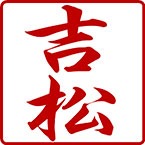Artists! Please Don’t Do This…
I’ve had many calls from artists who want me to color correct, up-rez (increase details) and print their art from smartphone photos. It’s always a challenge to politely tell them that their smartphone photo isn’t good enough to print large images to be hung and sold in galleries. After my most recent request, I wrote this article to help explain the reasons. (Digital camera mavens can skip this because I take a lot of shortcuts in this article.)
The first reason is resolution: Resolution is the MP (megapixel) count of cameras. The higher the resolution, the greater the number of pixels and the finer the details. Most smartphone cameras don’t have enough resolution to faithfully reproduce prints that are sharp, clear and crisp. Even those cameras touted as having 50 to 100+ megapixels produce compromised results. It doesn’t take rocket science to understand that 100MP on a small sensor uses smaller photosites (light capturing buckets) than on a large sensor. Therefore, the smaller the light catching buckets, the less light is captured. Less light means less clarity just like your vision in low light. That’s why resolution is important but just part of the equation.

The second reason is size & compression: Most phone cameras capture small image sizes to save memory space. The smaller the image size, the fewer pixels (picture elements.) That means what may appear fine on a phone screen or even a computer monitor will pixelate (have jaggies) when enlarged. There’s no way around this. Too few pixels are filling too large an area. Next, even when capturing large images with many pixels, most phones save files in JPEG, a lossy compression format. Large swaths of similar pixels are lumped together causing loss of details and fine gradations.
A Short Diversion Into JPEG
JPEG (Joint Photographic Experts Group) is an amazing technology that’s been around since 1992. It was originally designed for web and Internet use when bandwidth was precious and speeds were abysmal. As bandwidth and speeds improved, image sizes grew even bigger, ensuring the continued need for JPEG. Today, JPEG is ubiquitous and most phones automatically save images in JPEG format. The example image shows low compression (lots of data) on the right and high compression (minimal data) on the left. Notice how details are totally missing on the left side. Most phone cameras automatically use JPEG compression. Printing this file means interpolating (guessing) what details need to be added back, a near impossible task. Once a file is compressed in JPEG the results are baked in and can’t be recovered any more than a scrambled egg can be put back into the shell.
Back to Our Regularly Scheduled Programing
The third reason is that very few phone cameras offer RAW image capture. RAW is not an acronym but simply RAW data as captured by the sensor. In reality, even RAW data is “massaged” by the phone’s software to the manufacturer’s vision of an ideal photo. Sometimes, skin tones are too ruddy or foliage is too vibrant or water is too brilliant. The advantage of RAW is that these color interpretations can be corrected in RAW processing software. However, the biggest drawback to cellphone RAW is that most software is tuned to appeal to snapshooters who aren’t too picky about color fidelity. Combined with the tiny, noisy pixels created by cellphone cameras, the results are often sub-optimal.
Bottom line, cellphone cameras were not designed to capture images for large prints. Either get yourself a quality camera that has RAW capture or have a professional do the job.


Recent Comments